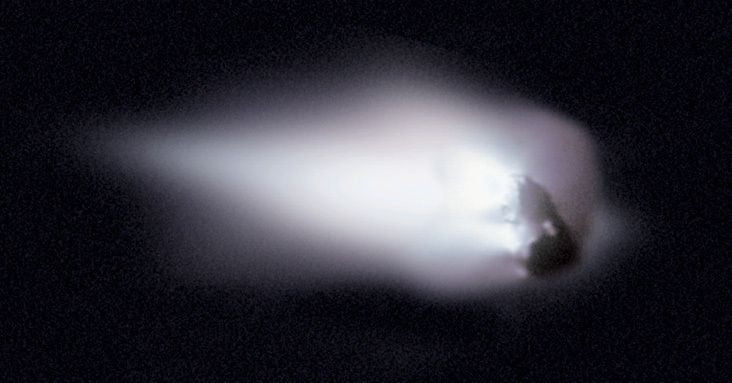Scientists Uncover Mystery Behind Strange Asteroid With A Tail

KEY POINTS
- Researchers were able to determine the exact nature of 2019 LD2
- They initially believed 2019 LD2 was an asteroid with a comet-like tail
- Observations revealed that 2019 LD2 is a comet that follows the orbits of asteroids
Through follow-up observations, a team of researchers was finally able to determine the exact nature of the strange space object they spotted earlier in May. In their initial discovery, the researchers saw an asteroid with a comet-like tail.
The strange asteroid-like object was named as 2019 LD2. According to the researchers, although the space rock followed the orbit of other asteroids, it had a physical feature that can be commonly seen in comets, which is a dust tail.
Initially, the researchers thought that the object was an asteroid that was formed within the orbit of Jupiter, making it a Jupiter Trojan. They believed that due to the location where it was formed, the asteroid had an icy interior.
The researchers theorized that 2019 LD2 collided with another asteroid, which then exposed its icy core. As its icy interior vaporized, it created a tail cloud behind the asteroid.
However, after carrying out follow-up observations on 2019 LD2, it seems the space object was not an asteroid at all. Using the Asteroid Terrestrial-Impact Last Alert System of the University of Hawaii, researchers Alan Fitzsimmons and Henry Hsieh were able to confirm that 2019 LD2 was simply a comet that was in disguise.
According to the researchers, the object, which was renamed to P/2019 LD2 due to its cometary nature, is a comet that follows a dramatically changing orbit, causing it to follow the trajectory of most asteroids.
Based on their observations, Fitzsimmons and Hsieh noted that P/2019 LD2 follows a trajectory that passing near Jupiter. Due to the planet’s gravitational pull, the comet’s orbit changes, causing it to follow the path of the Jupiter Trojans.
“Comet P/2019 LD2 regularly comes close enough to Jupiter every few decades so the pushes and pulls from close gravitational interactions with Jupiter can change the comet’s orbit dramatically,” the University of Hawaii explained in a statement. “In the case of P/2019 LD2, its location and orbit currently approximates the position and near-circular orbit of Jupiter Trojan asteroids.”
According to the researchers, the asteroid is currently on its way to approach Jupiter once again. During its flyby, the comet’s orbit will be altered by the planet again, causing it to deviate from the trajectory of the Jupiter Trojans.
© Copyright IBTimes 2025. All rights reserved.





















